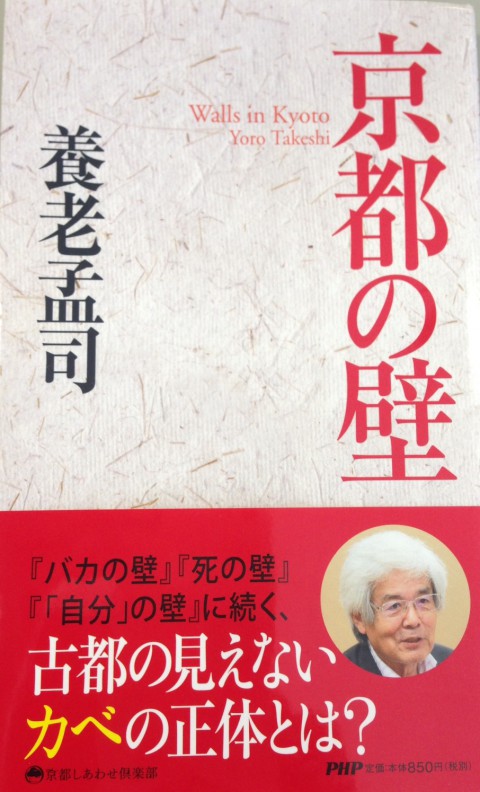“Walls in Kyoto” written by Dr. Takeshi Yoro
2017.08.06
An anatomist, Dr. Takeshi Yoro gave a lecture at a lecture meeting by Bhutan Museum
in Fukui City, last year.
In fact, his father was from Ono City, Fukui Prefecture, so he has a connection with Fukui.
We took its video and posted it on this website and our YouTube channel.
I subtitled it in Japanese and English spending a long time, so now I feel an affinity with him.
Here is the video.
↓
Speaking of Dr. Yoro, his big bestselling book called “The Wall of Fools” is famous, but he is also well-known as a bug lover. And, he likes Bhutan, so he has visited Bhutan many times. But, why Kyoto now? It is because he became the first director of Kyoto International Manga Museum and served the position until this spring.
Dr. Yoro is interested in “cities”. When he sees Kyoto as a city, he says that the most unique thing is there is no castle in Kyoto. Although the title of the book is “Walls in Kyoto”, he said there is no wall in Kyoto first so I was surprised.
According to him, instead, Japan made “Emotional wall” as a ritual boundary.
I smiled when I read about dogs in Bhutan as he said at the lecture last year.
Moreover, when I read about his cat “Maru”, it was irresistible because Maru is so cute
and its photobook was even published!
"Dr. Yoro and his cat Maru"
Dr. Yoro wrote that in Kyoto, there are values which are different from money.
For example, Kyoto values students and learning, culture and traditions.
It is said that the wall in Kyoto is high but it is a little lower for university professors
and students. So students seem to have gathered from across the country.
Tracking back the history, the reason for capital relocation was probably due to resources,
he said. It was abundant in groundwater and Heian Period lasted for such long time, which means it was a fairly wise choice. However, abundant groundwater makes so cold in winter and hot in summer, because once the groundwater warms up, it’s hard to cool down, and in winter, it freezes as the groundwater gets cold. I thought vaguely that Kyoto is a basin so it’s hot in summer and cold in winter but actually it was due to the groundwater. Indeed, the heat from the ground surface in Kyoto, it is quite different from the heat in hot and humid Fukui.
Meanwhile, he wrote that cities where develop to a high degree flourish centering on a river like Paris and the Seine, and Kamo-gawa River equals to the Seine.
Indeed, I cannot imagine Paris and Kyoto without the Seine and Kamo-gawa River neither.
According to him, “You can learn the attraction of Kyoto only by visiting there. So I guess
people visit Kyoto including me. Even if there is the wall of Kyoto there.”
Maybe because there is such an invisible wall, its mystique has born, intriguing and a culture of its own has accumulated.
When I finished reading the book, I wanted to walk around Kyoto again.
After it gets much cooler…(H.S)


